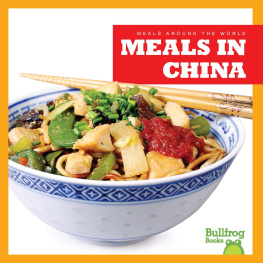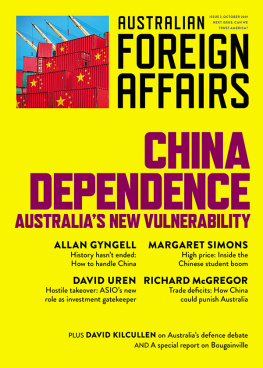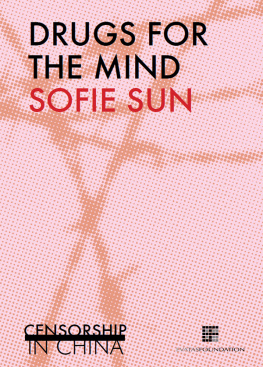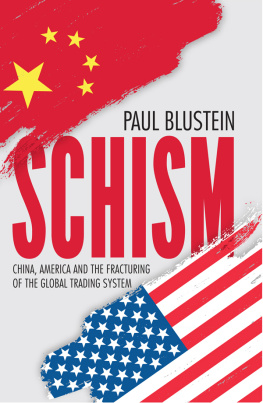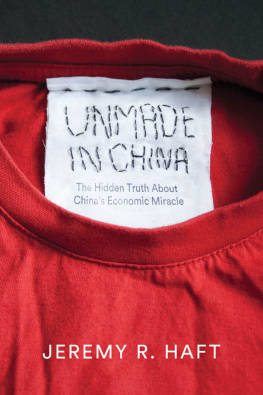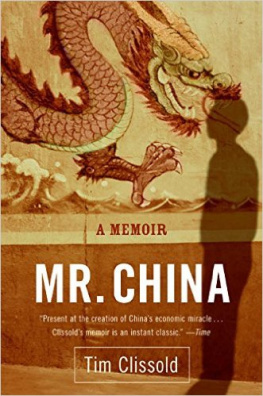
This book would not have been possible without Susan White, an editor of three Pulitzer Prizewinning stories who inspired us in more ways than we can say. Her keen journalistic eye for a good story and commitment to informing the public about critical issues of our time have been priceless. Together with Bob Laurence, Susan provided abundant enthusiasm and gracious hospitality that we will remember fondly for many years to come.
We are grateful to Charlisa Allen, MD, a courageous and remarkable woman, who allowed us to tell the human story of the hidden impact of globalization and deregulation on America's medicines. Kevin McNeil helped us wade through a nontransparent industry to tell a truth waiting to be told.
David Kessler, MD; Michael Wessel; Brigadier General John Adams; Scott Boos; Stephen Smith, MD; and Lucinda Maine, PhD, RPh, introduced us to leaders in the government and industry who shared their decades-long knowledge and experience with us. We are humbled by the professionalism and dedication of those who go to work every day to ensure people in the United States and around the world have medicines that are safe, every pill, every person, every day.
Roger Leonard, MD, carefully reviewed sections with medical terms and the uses of prescription drugs. Larry Jassie, MD, patiently read multiple drafts, as did Kevin Kavanagh, MD; Nisha Singh; Sarveshwari Singh; and Shriansh Singh.
We are indebted to Sandy Dijkstra and Elise Capron for believing in this book and finding the perfect home for it. They wisely encouraged us to put a human face on the risks of offshoring America's medicine making. We have no words to express our unerring gratitude to them.
Steven L. Mitchell, editor in chief at Prometheus Books, grasped the significance and timeliness of the book, and we are immensely grateful to him. Jeffrey Curry and Hanna Etu perfected the manuscript with expert editing. Jake Bonar's creative ideas shined a publicity spotlight on China Rx. We are grateful to the entire Prometheus team for bringing the book to fruition.

Here are tips to find out where your medicines are made. Some companies consider the information proprietary while others will gladly tell you.
Companies build trust with their customers when they openly state where their products come from. It shows that the drug companies have confidence in where they are made. When companies don't tell, customers will naturally wonder why.
Here's what you can do to find out where your medicines are made. You may not always be successful, but it's worth a try.
CALL THE COMPANY LISTED ON THE DRUG PACKAGE
Look on the label of your medicine for the name of the manufacturer, distributor, or packager. The FDA requires companies to disclose this information. Some labels may tell you the country where the product is made. If the label on your product doesn't say, go online and find the company's customer service phone number and speak to a representative. Ask for the country of origin of the pills and the active ingredients because they are often different. Some pharmaceutical companies have nurses and pharmacists who answer questions, and if so, you might get more information by speaking to one of them.
If your prescription drug comes in an amber-colored bottle or another type of container without a company name on the label, ask your pharmacist for the name of the manufacturer, distributor, or packager, which is found on the drug package. If you go to a pharmacy to pick up a prescription, ask the pharmacist to show you the package and snap a picture with your smartphone or ask the pharmacist to photocopy the package for you.
GO TO DAILYMED
Go to the website DailyMed, which is an authoritative website maintained by the National Library of Medicine at the National Institutes of Health in Bethesda, Maryland. It is the official source of information printed on the labels of drug packaging. The FDA obtains the information from manufacturers and provides it to DailyMed.
In the search box on DailyMed, type the name of your prescription drug. A list of the companies that make it will appear. You can click on each product, and many products will have pictures of the drug package with the name of the manufacturer, distributor, or packager. Call the company and ask where the finished drug and the active ingredient are made.
ONLINE WEBSITES
When we searched You can look up each company to find out where its generic is made.
Be aware that online information isn't always accurate. The generic blood pressure medicine losartan potassium is listed for sale on Good Rx. The website says the generic is made by a US company, Pack Pharmaceuticals.
When we searched for an over-the-counter pain reliever, WellPatch capsaicin patches, Amazon sells it, but the image of the package on the Amazon website doesn't say where it is made.
HOW TO REPORT SAFETY CONCERNS TO THE FDA
If you have a problem with a medicine, talk with your doctor. You can also tell the FDA. Report serious side effects such as new or worsening symptoms. If you notice a problem after switching to a drug made by a different company, or have problems with the quality of a drug, report it. Call the FDA toll-free line 1-800-332-1088 to find out how you can report, or go online at www.fda.gov/medwatch.
WHEN CO-PAYS AND DEDUCTIBLES DETERMINE THE MEDICINE YOU TAKE
You may not have a realistic choice when deciding whether to take a brand-name or generic drug because out-of-pocket costs can be very expensive, depending on your insurance plan. A woman we know who worked in the pharmaceutical industry told us she had been paying a forty-dollar co-pay for a brand-name drug, a price she could afford. When she became eligible for Medicare, the out-of-pocket cost for the brand-name drug jumped to $300, while the generic drug cost a couple of dollars. She switched to the generic because it was more affordable.
Whatever medicine you take, be assured that the US drug supply is among the safest in the world. Hundreds of thousands of people go to work every day to make medicines as high quality and safe as they can be. One of those dedicated people said that many in the industry remind each other that the products they make might be for their children, parents, or themselves. If you have questions or concerns, always talk to your healthcare provider before stopping or switching your medicines.

After the Sonoran desert sun had set, Bob Allen, MD, walked into the emergency department at the Mayo Clinic Hospital in Phoenix, Arizona. It was Saturday, December 1, 2007. Within twenty-four hours, the healthy forty-five-year-old Johns Hopkinstrained physician was facing a medical catastrophe.
It had rained that day, and the day before, nearly two inches total, copious amounts by desert standards. It was enough to quench the parched earth. Afternoon gusty winds accompanied the welcomed moisture plume.
The week before, Bob and his wife, Charlisa, easily conquered the rocky Echo Canyon Trail on Camelback Mountain, whose final quarter mile can be a climb on all fours straight up to the top overlooking Paradise Valley. A silhouette of the granite summit at Pinnacle Peak, fifteen miles north, decorates the horizon.
As a doctor, Bob had the propensity to self-diagnose. He accurately figured out that his belly pain, which triggered the visit to Mayo, was caused by a bleeding peptic ulcer. Charlisa, also a physician, drove Bob to the hospital, joined by their two children, Jennifer, age eleven, and Joshua, age fourteen.
Next page


